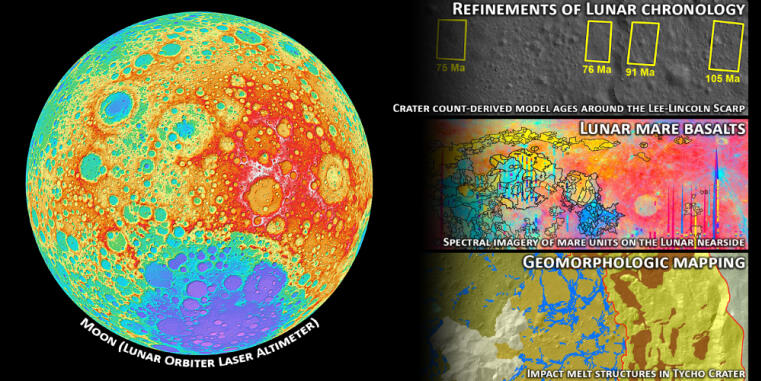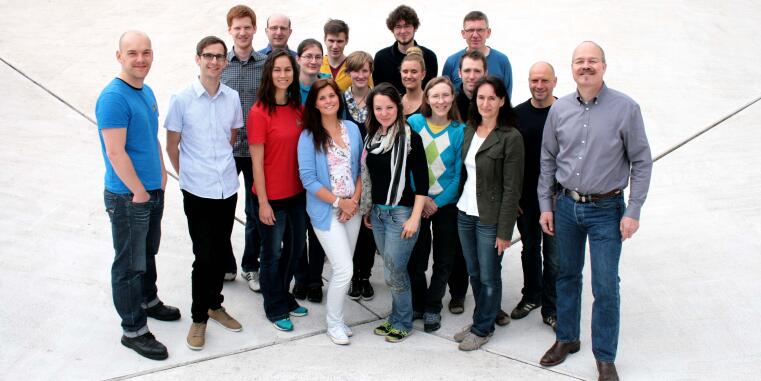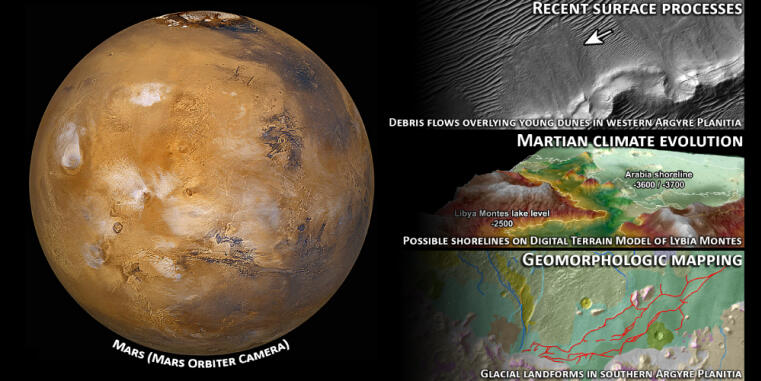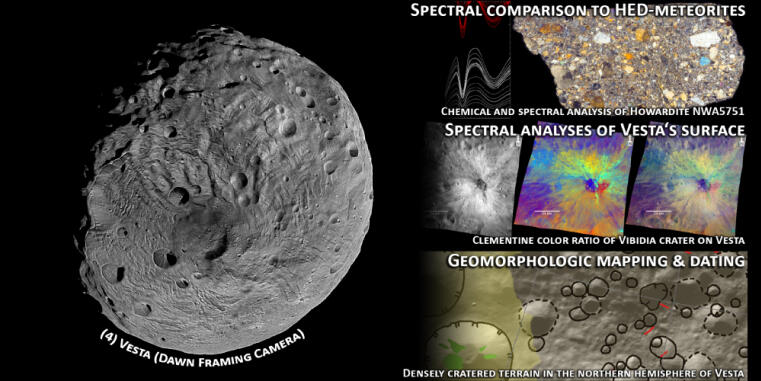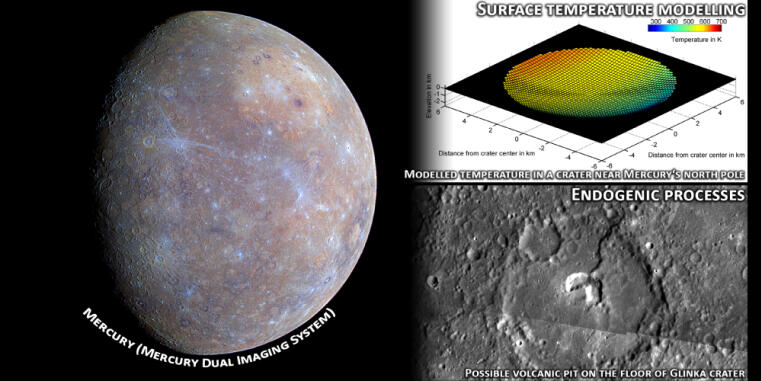Research
Moon
- Impact Morphologies and Volcanism:
- Lunar impact melts and their distribution in relation to target properties
- Volcanic surface processes and chronology of Mare-volcanism on the lunar farside - Lunar chronology and thrust faults:
- Investigation of the origins of variability in small crater size-frequency distributions on the Moon
- Age determinations for young lunar lobate scarps using crater size-frequency distributions - Data processing and modelling:
- Direct participation in the Lunar Reconnaissance Orbiter Camera (LROC): Cataloging, evaluation and analysis
- Building of remote sensing databases for the Apollo-, Luna-, and Surveyor-landing sites
- Modelling of surface temperatures around the Apollo-landing sites
Mars
- Recent surface processes:
- Analyses of geologically young and/or ongoing surface processes, e.g., dust devils and gullies
- Analyses of patterned ground and thermokarst
- Terrestrial analoges: Field work in cold- and hot deserts (e.g., Svalbard, Sahara, Atacama) in combination with remote sensing methods - Basins and climate change:
- Glaciers, lakes, seas?: Analyses and chronology of (peri-)glacial and fluvial structures in and around large Martian basins, e.g., Argyre, Isidis, Hellas and Utopia Planitia
- Geomorphologic mapping and comparison of the large basins on Mars
- Landing site selection for an European ExoMars mission in 2020 or later
Vesta and asteroids
- (4)Vesta and the dawn-mission:
- Geomorphologic mapping and surface age dating with Dawn data
- Spectral analyses of HED meteorites and comparison with Dawn data
- Analyses of spectral data by the Dawn mission
- Direct participation in the Dawn-Mission - Asteroids:
- Lab-based spectral analyses of meteorites
- Analysis of data by the VIRTIS-experiment on Rosetta ((21)Lutetia & (2867)Šteins)
Mercury
- Morphology and spectral analyses:
- Geomorphologic mapping based on MESSENGER-data
- Morphometry and age of pyroclastic deposits
- Modelling of surface temperatures, e.g., within craters - MERTIS-Experiment:
- Lab-measurements for the Mercury-Thermal-Infrared-Spectrometer (MERTIS) on board of Bepi-Colombo (MERTIS)
- Impact Morphologies and Volcanism:
Staff
- Johannes Benkhoff, Post-Doc
- Kelly Cairns, PhD-Student
- Thorsten Grund, Technician
- Thomas Heyer, Post-Doc
- Harald Hiesinger, Professor
- Wajiha Iqbal, Post-Doc
- Kathrin Markus, PhD-Student
- Sascha Mikolajewski, PhD-Student
- Andreas Morlok, Post-Doc
- Jan Hendrik Pasckert, Post-Doc
- Markus Patzek, Post-Doc
- Claudia Marisa Pöhler, PhD-Student
- Maximilian Reitze, Post-Doc
- Nico Schmedemann, Post-Doc
- Manuel Tiedeken, Technician
- Carloyn van der Bogert, Post-Doc
- Iris Weber, Post-Doc
Equipment & Methods
Geological Planetology studies the solid surfaces of planetary bodies in our Solar System (e.g., planets, moons, asteroids) and their surface processes (e.g., volcanism, impact cratering, tectonism). It is a highly inter-disciplinary field of research applying a wide range of scientific methods. Among these are remote sensing and in-situ data by manned and unmanned space missions, laboratory analyses of planetary samples, meteorites and terrestrial analog materials, as well as comparative field studies on Earth (e.g., in hot and cold deserts). Geological Planetology decisively contributes to our understanding of the Solar System and its evolution and thereby also helps to better understand and appreciate Earth as a planet.
Equipment:
- Bruker VERTEX 70v FTIR system
- Ocean Optics IDR-MICRO-532 Raman spectrometer: The IDRaman micro is Raman microscope optimized for high-sensitivity measurements. With its OneFocus feature, the IDRaman micro collects Raman spectral data from the same focal plane as the image. This Raman is equipped with a Nd/YAG 532 nm laser.
Publications


